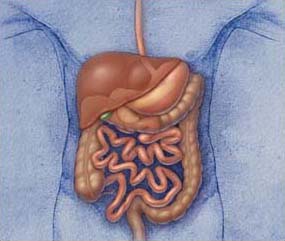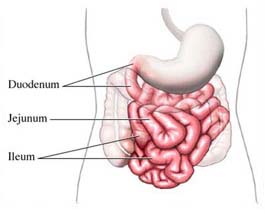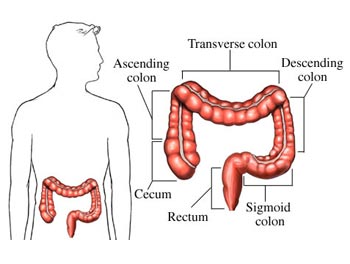Intestines
What is the intestines?

The intestines, which lie between the stomach and the anus, are part of the digestive system. It is divided into two major sections: the small intestine and the large intestine.
Digestion consists of complex interactions involving numerous organs, nerves, hormones, and other chemical messengers. The small intestine and large intestine (colon) each have distinct but overlapping roles in digestion. Both break down food with enzymes and pass it into the bloodstream for circulation throughout the body. In this way, the food is converted into nutrient forms capable of providing the organs with energy to function and to grow.
The small intestines

The small intestine is about 6 m (20 ft) long. It is coiled in the center of the abdominal cavity. It is the part of the gastrointestinal tract between the stomach and the large intestine (colon). It is divided into three structural parts: duodenum, jejunum and ileum. Food from the stomach is allowed in to the duodenum by a muscle called the pylorus, or pyloric sphincter, and is then pushed through the small intestine by a process of muscular contractions called peristalsis.
The small intestine is the site where most of the nutrients from ingested food are absorbed. There are microscopic finger-like projections called villi covering the small intestinal walls which increase surface area for absorption. Each villus contains a lacteal and capillaries. The lacteal absorbs the digested fat into the lymphatic system which will eventually drain into the circulatory system. The capillaries absorb all other digested nutrients. The lining of the small intestine secretes a hormone called secretin, which stimulates the pancreas to produce digestive enzymes.
Although the small intestine is much longer than the large intestine (typically 4-5 times the length of the large intestine), it is referred to as such due to its comparatively smaller diameter. On average, the diameter of the large intestine of an adult human measures approximately 3 times the diameter of the small intestine. Upon viewing accurate diagrams of the digestive system, non-medically trained personnel often initially express bemusement as to why the obviously longer portion of the digestive system is referred to as the small intestine.
The large intestines

The large intestine has a larger width but is only 1.5 m (5 feet) long. The large intestine is divided into 6 parts: cecum, ascending colon, transverse colon, descending colon, sigmoid colon, and rectum.
Most food products are absorbed in the small intestine. The large intestine is responsible for absorption of water and excretion of solid waste material. Food and waste material are moved along the length of the intestine by rhythmic contractions of intestinal muscles; these contractions are called peristaltic movements. Waste is solid because most of the water has been removed by the intestines as it travels through them.